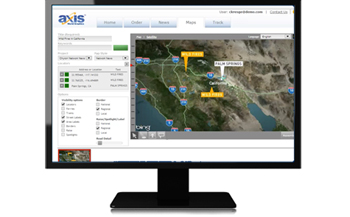SaaS Gains Traction in Broadcast Facilities

Signiant Media Shuttle speeds
NEW YORK—For nearly 20 years, broadcast engineers and IT professionals alike have used the symbol of the cloud to denote the Internet in technical and workflow diagrams. This nebulous shape referred to the often hard-to-define physical space of the Internet, where hardware could be in multiple geographic locations, and connected via a multitude of differing paths.
Today, this space is home to cloud computing, where businesses around the world are using the Internet’s global connectivity and leveraging powerful new data centers to expand their businesses and services. Though providing fertile ground for e-commerce, not every business likes this model. Many media and entertainment organizations have been wary about moving their content out of their tightly controlled internal networks to offsite where it is under someone else’s control.
The concern is not over productivity software, but rather, control of assets as many media professionals are currently using cloud-based services such as Salesforce.com and Office365 in their facilities. These programs offer a new purchase model that offers cost and expense efficiencies that businesses cannot ignore.
“Businesses are asking for a pricing and packaging model that is OPEX, with low setup costs and scalability,” said Rick Clarkson, vice president of product management for Signiant, a Burlington, Mass.-based provider of cloud-based media transfer applications. Cloud-based services typically offer subscription-based services, managed via web portals that can dramatically reduce local hardware, software and staffing costs.
“These systems can be more reliable and less costly than managing all these elements in house,” said Jim Martinolich, vice president of integration technologies for ChyronHego in Melville, N.Y. Both ChyronHego and Signiant have been offering products for several years that allow media professionals to access cloud-based services.



ChyronHego’s Axis World Graphics system Broadcasters in particular have been wary about exposing their assets or their on-air systems to the Internet. Most have extensive firewalls and VPNs that manage any asset transfer in or out of their facilities. “Availability and security are valid concerns,” Martinolich said. He believes that concepts and terminology behind what cloud computing really means can be as nebulous, as well yes, a cloud.
Ian Fletcher, chief technology officer of digital media and workflow at Grass Valley in Montreal agrees.
The professional video industry's #1 source for news, trends and product and tech information. Sign up below.
“I think that there is a huge amount of confusion in this area,” he said. Fletcher said he sees some companies throwing cloud buzzwords around without fully explaining what they are doing in the cloud.
There are many challenges presented by entry into cloud computing for media businesses; from security and understanding the technology, to the financial pressures to pursue more efficient technologies. These all have media professionals taking cautious steps toward the cloud.

Ian Fletcher, chief technology officer of digital media and workflow at Grass Valley in Montreal “There is a huge difference between using the cloud as a way of storing files, effectively as offsite storage, and true cloud computing using the SaaS model,” Fletcher said. Software as a Service is one of three cloud computing terms that those venturing into the cloud need to know. He sees many IT vendors confusing people with the migration of facility computing to data centers as more an exercise in virtualization and cost cutting than leveraging cloud computing.
There are three basic components to full cloud computing, they are SaaS, Infrastructure as a Service and Platform as a Service. Here IaaS provides the hardware basis at the data centers, and PaaS is the platform or operating system for software programs to run. SaaS needs IaaS and PaaS to function and to provide the customer access to the service.
Several well-known broadcast and media production companies have begun to offer systems that introduce cloud computing benefits, but in looking closely, there are differing approaches taken by each vendor.
Martinolich said that with ChyronHego’s Axis World Graphics system, “Our service is completely in the cloud, with all of our servers residing in redundant data centers.”

